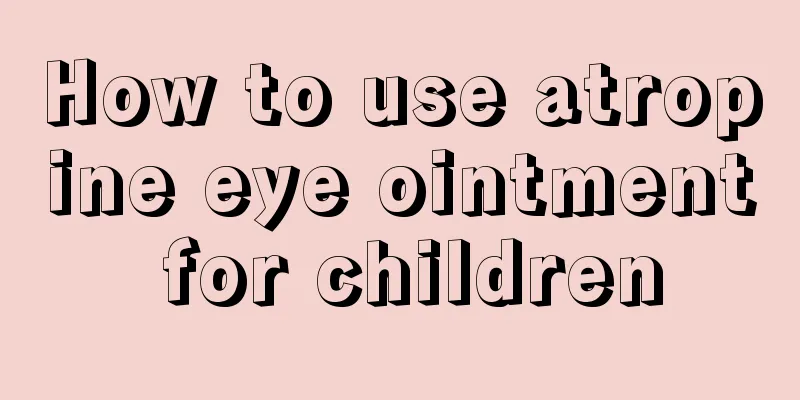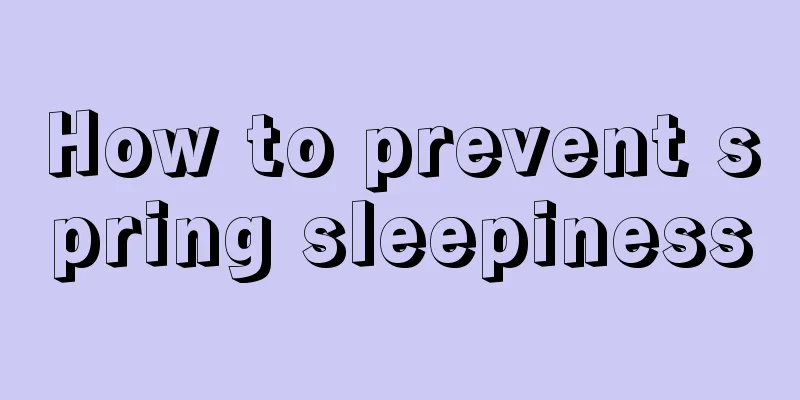How to use atropine eye ointment for children

|
The usage and dosage for children and adults are different. Children generally need to take half the dose. Any medicine has side effects, so try to take less and don't overdose. Atropine eye ointment has the effect of dilating the pupil, and the younger the age, the better the effect. There needs to be an interval of about eight hours between each medication so that the next medication can be used. Make sure to get more rest and avoid watching electronic products. The three-step method of using atropine eye ointment is 3 times a day for 3 consecutive days. There is no strict regulation on the interval between each use, but it is best to have an interval of about 8 hours. It can be used once in the morning, afternoon, and evening. Apply an amount about the size of a grain of rice each time, pull open the lower eyelid, look upward, apply the eye ointment on the conjunctival surface of the outer corner of the eye, press the inner corner of the eye, and open your eyes after 5-10 minutes. Your face may appear slightly red after taking the medicine, which usually subsides on its own within 1-2 hours. Drink more water during the medication period. Do not read or watch TV after dilation, and avoid direct sunlight outdoors. It is very necessary for children and adolescents to undergo mydriasis refraction when wearing glasses. This is a necessary method to test the true degree of your child's eyes. We recommend that atropine be used to dilate the pupils for children under 6 years old, but because of the side effects of atropine, it is important to use atropine in the correct way. The current method of using atropine eye ointment: 1. Apply the medicine to both eyes once every night before going to bed for seven consecutive days. 2. Go directly to the hospital for a follow-up examination and eye examination after seven nights. 3. For special patients, use according to doctor's advice. 4. When applying atropine eye ointment, let the child sit down (with the head tilted back) or lie down, gently pull open the lower eyelid, let the child's eyeball look upward, and apply atropine eye ointment the size of a grain of rice into the eye (Note: do not apply excessive amount). 5. After applying the eye drops, immediately press the root of the nose at the inner corner of both eyes for 5 to 10 minutes to reduce the systemic absorption of atropine and avoid side effects that may cause discomfort to the child. Things to note during mydriasis: 1. Any medicine applied to the skin outside the eye should be wiped clean in time to avoid skin absorption. 2. After the pupils dilate, the child will be afraid of light and have difficulty seeing close up, which is normal. 3. Avoid strong light stimulation, especially sunlight stimulation, during mydriasis. Reduce outdoor activities and wear a sun hat or sunglasses. 4. It is difficult to see clearly at close range during the period of mydriasis, so children should be carefully cared for to avoid injuries. 5. Try to reduce close-range eye use during mydriasis, such as stopping reading or doing homework. Try to watch less TV and use less computer. 6. If the drug is used in excess, the child will have obvious redness and fever on the face; red eyes and swollen eyelids; thirst and fever all over the body, etc. These are caused by the side effects of atropine. Children should be given plenty of water and closely observed. For most children, symptoms will be alleviated or disappear within two hours, and they can continue to take medication on time. During medication, let your child drink plenty of water, reduce outdoor activities, and avoid strong light. If the above conditions do not improve or even worsen, you should stop the medication immediately or consult an ophthalmologist. 7. Atropine has a relatively long duration of action. After stopping the mydriasis medication, it takes about three weeks for the pupil to return to normal. However, due to individual differences, the time it takes for a child's pupil to recover will also vary. This is all normal and will not have any adverse effects on the eyes after recovery. |
<<: Erythromycin eye ointment for treating nasal concha hypertrophy
>>: The correct way to apply eye ointment to the nasal cavity
Recommend
What are the effects of alfalfa enzyme
Many people may not know what effects and functio...
The benefits of foot soaking all year round
There are many benefits to soaking your feet all ...
How to treat advanced laryngeal cancer
Laryngeal cancer is not common among systemic tum...
What are the hazards of silver nitrate to human body
When it comes to silver nitrate, the first thing ...
Is cervical cancer hereditary?
Cervical cancer may be life-threatening. Patients...
Can sigmoid colon cancer be cured
We know that colon cancer is a very harmful disea...
Treatment principles for rectal cancer that require strict attention
In China, rectal cancer is a very common disease....
Why my legs got thicker even though my weight didn't go up
Having a pair of beautiful legs is the dream of m...
Why do I have lower abdominal pain and the feeling of always wanting to defecate?
Many women may have experienced the feeling of lo...
Characteristics of a simple girl
In this complex social environment, everyone'...
What are the commonly used drugs for treating bronchial asthma
Bronchial asthma is a relatively common respirato...
How to get rid of garlic smell in mouth
Garlic is a very common vegetable in our daily li...
What is the difference between water mist eyebrows and silk mist eyebrows?
Many people are not satisfied with their eyebrows...
What are some tips for removing acne marks
Now more and more friends have acne on their face...
How to preserve ginger lotus in winter
Nowadays, many people like to grow plants, becaus...









